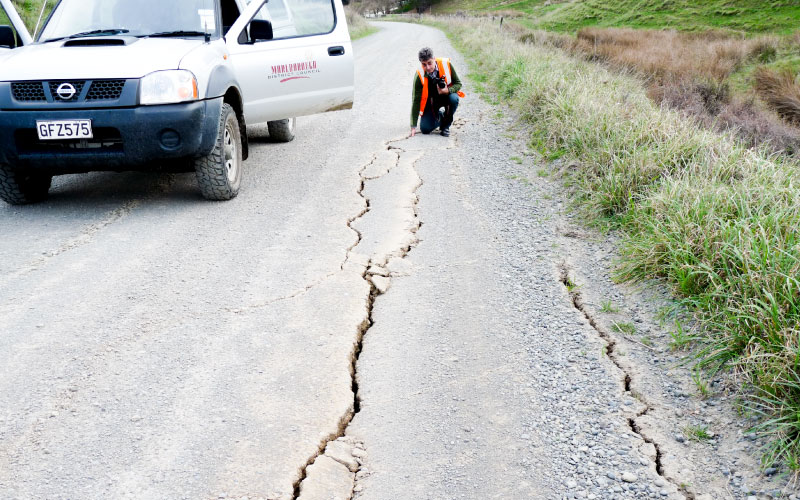Earthquake
Marlborough lies within the highest earthquake risk zone in New Zealand. This is because the district is crossed by a series of fault lines associated with the relative movements of the tectonic plates beneath New Zealand. The Wairau, Awatere and Clarence faults are an extension of the Alpine Fault, as are a number of other active faults of limited extent.
There are also several important faults offshore to the east of Marlborough. Ground shaking will occur from ruptures on these fault lines. The northern area of Marlborough (mainly the Sounds) is over or adjacent to the subducting Pacific tectonic plate. This feature can generate severe shaking without necessarily showing surface faulting.
The largest historical earthquake experienced in Marlborough that generated ground fracture occurred on the Awatere Fault in 1848. It had an estimated magnitude of 7.5. Earthquakes occurring in other areas can also affect Marlborough with severe ground shaking, notably the Wairarapa earthquake of 1855 with a magnitude of 8.2. The lack of recent significant earthquakes can lead to a false sense of security.
In addition to the obvious effects that earthquakes can have on buildings and infrastructure, and the consequent threat to public safety, there are secondary hazards associated with earthquakes. These include fires in urban areas and liquefaction. Liquefaction occurs during shaking when the soil becomes like a liquid and loses its ability to support buildings and other structures.
Some types of soils are more susceptible than others to liquefaction and shallow groundwater also increases the potential for liquefaction. There are indications that soils susceptible to liquefaction can be found along the coastal margin of the Wairau Plain, especially in the Riverlands area.
Given the number of active faults that exist in Marlborough, earthquakes are a very real hazard. Although nothing can be done to prevent an earthquake from occurring, there are various ways in which the impact of earthquakes can be reduced.
These can include trying to minimise the impact of earthquakes on buildings and ensuring new buildings are not located on active faults. Buildings constructed in close proximity to active faults face a much greater risk because of the potential for differential horizontal and vertical movement and the potential for soil disturbance.


